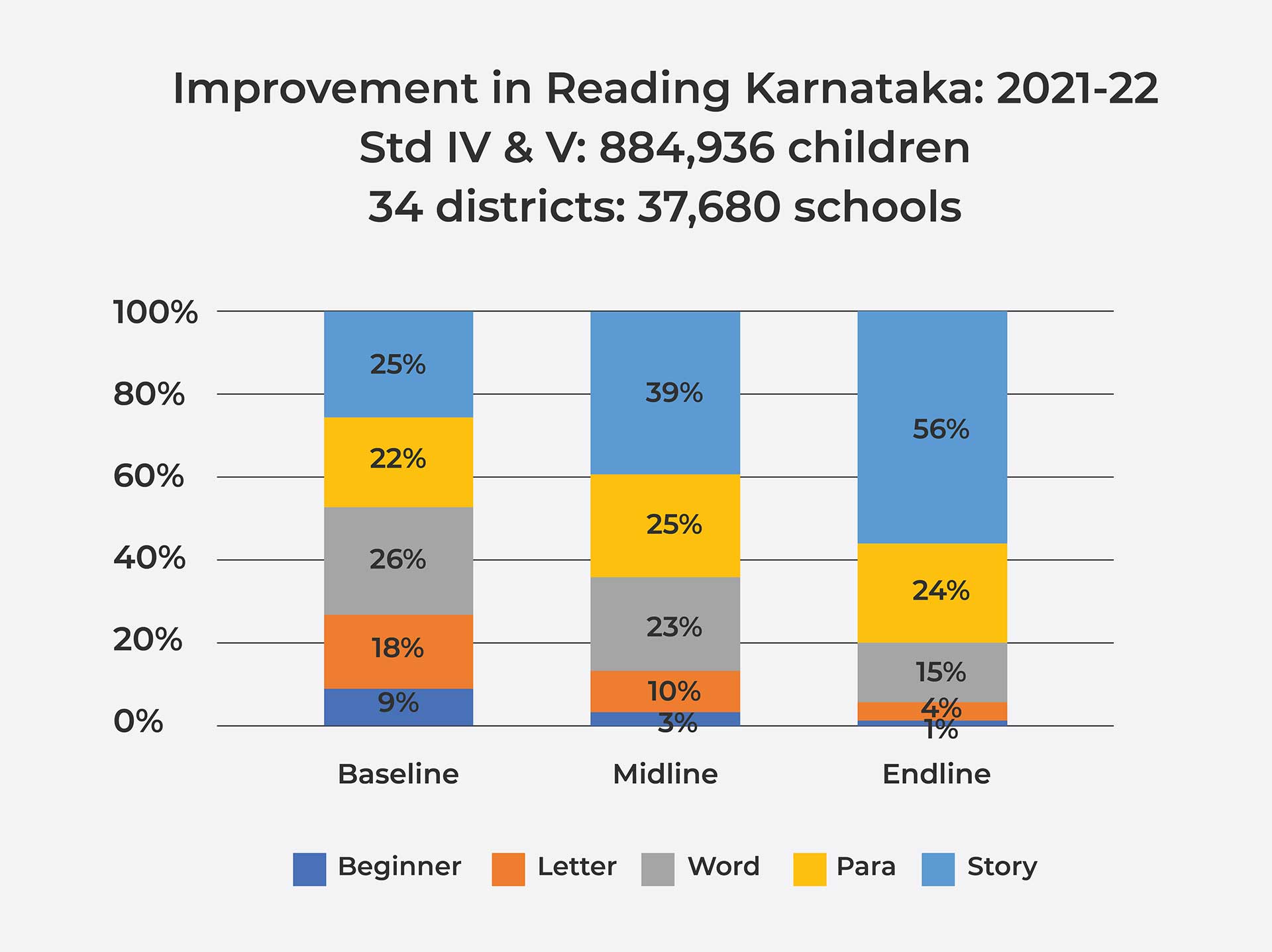UNDERSTANDING THE PROBLEM
Recent figures for rural India indicate that over 96% of children are enrolled in school. With almost all children in school, the critical question facing the country is – are children learning?
Since 2005, ASER – the Annual Status of Education Report – has attempted to answer this question. Facilitated by Pratham, ASER is a nationwide household survey that reaches a representative sample of children in every rural district in India. Approximately 700,000 children from more than 370,000 households are reached every year. A set of basic reading and arithmetic tasks are administered one-on-one to each sampled child. In 2022, ASER visited 616 districts across the country.
Sample: Aser Reading And Arithmetic Too
Over 10 years of data from ASER points to three key facts:
- At every grade level, basic learning levels are unacceptably low. The all-India figures from ASER 2022 suggest that less than half of all children enrolled in Grade 5 can read text at least at Grade 2 level. A similar proportion of children are able to do a two-digit subtraction problem (with borrowing) correctly. This suggests that at least half of all children in Grade 5 in India need immediate support.
- Data from recent years shows small increases, especially in lower grades, but much higher improvements are needed to bring children up to the grade-level expectations.
- Learning trajectories over time are flat. This suggests that if children do not acquire foundational skills in the primary school years, it is unlikely that they will pick them up later.

GOING BEHIND THE HEADLINES OF ASER
Below is a table from ASER 2022 that shows reading levels for Grade 3 to 5. Not only do we see a large proportion of children at low levels of reading, but the variation in each grade is wide. For example: In Grade 5, while 42.8% of all children can read Grade 2 level text (or even higher), the rest are not yet at Grade 2. Close to 14.6% of children are only able to recognize letters or yet to acquire that skill. Around 16.4% can read simple words but not sentences and another 19.9% are just about reading text at Grade 1 level. This situation presents a huge challenge to any teacher. What should a teacher teach? And to whom? In a typical Indian classroom, the Grade 5 teacher teaches from the grade-level textbook and thus only the “top of the class” benefits from her teaching.

A POSSIBLE APPROACH FOR ACQUIRING FOUNDATIONAL SKILLS : TEACHING AT THE RIGHT LEVEL
Over the last 15 years, Pratham has evolved an approach called Teaching at the Right Level (TaRL) which enables children to acquire foundational skills, like reading and arithmetic quickly. Regardless of age or grade, teaching starts at the learning level of the child. This is what is meant by Teaching at the Right Level. The TaRL method, developed by Pratham, was originally designed keeping in mind children who have already reached Grade 3, 4 or 5 but have not acquired basic skills. The focus is on helping children with basic reading, arithmetic skills, and ensuring they are able to understand better and express themselves. These are foundational building blocks that help a child move forward. Studies have shown that once acquired, these capabilities endure over time. TaRL is an effective and low-cost strategy that helps children to catch up in a short period of time. Children, who are 7 or 8 years old and older, and have been in school for a few years, can pick-up quickly.

To be effective, the TaRL approach needs to be embedded in a larger eco-system whose elements are aligned to support and ensure learning for all children.
Here are the main features of the school system that need to be changed to ensure that learning for all is possible.

BIG CHANGE IS POSSIBLE
Today Pratham’s TaRL approach is implemented in two ways – directly by Pratham instructors through Learning Camps or as part of a Pratham-government partnership program where government teachers implement TaRL as part of the school day.
In the direct model, Pratham instructors run Learning Camps, which include 30-50 days of instruction for about 3 hours a day. In the partnership model, government teachers use this approach over a longer period in the school year (four to six months) with dedicated time for 2-2.5 hours a day.


Here is an example of learning improvement seen in the 2021-22 Pratham-Government of Karnataka Partnership Program for Grade 4 & 5:

In the 2022-23 school year, Pratham partnered with several state governments to help children acquire foundational skills. These states include Uttar Pradesh, Bihar, Andhra Pradesh, Karnataka, Delhi, and a few districts of Maharashtra, Madhya Pradesh, Arunachal Pradesh and Daman and Diu Union Territory.
